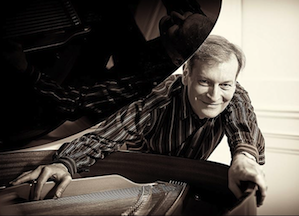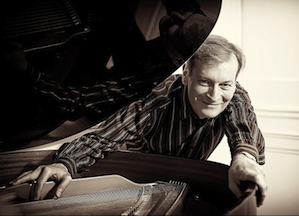
With the glorious weather outside, sun streaming through the clerestory windows of Weill Hall, a fuller than usual crowd gathered for the Santa Rosa Symphony concert on Sunday afternoon. One reason may have been the "Sons of the Fjord" program, which featured the enduringly popular Grieg piano concerto and the titanic Sibelius Symphony No. 2.
Another reason appeared at the beginning of the show, when the announcer asked a visiting delegation from the Sons of Norway to stand, prompting several dozen people to rise, many of whom appeared to be daughters. As if that weren't enough audience padding, small groups of wind musicians began populating the encircling balconies, leaving only their string cousins and assorted percussion on stage.
The occasion for this musical diaspora was the American premiere of the opening piece, contemporary Norwegian composer Orjan Matre's Resurgence for Orchestra. Like many modern works, Resurgence dwells on the spatial aspect of sound rather than its temporal elements. The piece begins quietly with the strings and percussion on stage, then migrates to a brass band hidden in the wings, and finally to the woodwinds in the balconies.
The effect of all this separation is waves of sound originating at different points and traveling by different paths before reaching the listener's ears. The sounds are resolutely tonal, with an emphasis on minor thirds and a steady beat. In essence, Resurgence boils down to a series of chords that differ both harmonically and spatially. The audience responded warmly, beckoning conductor Bruno Ferrandis back for a curtain call, a rare event for a concert opener from the 21st century.

The necessary stage reshuffling for the Grieg piano concerto was punctuated by the descent of sound-absorbing blinds across most of the clerestory windows. The blinds are a key element of Weill Hall's high-tech acoustics, which allow the space to be adjusted for each ensemble, from fully reflective to partially absorbed.
In the case of pianist Philippe Bianconi, the partial absorption made the individual notes more distinct, but not at the expense of a grippingly resonant sound. Under his fingers, the Grieg concerto's famous opening chords rang out, immediately drawing the audience into the hyper-Romantic, 19th-century work. Bianconi sat ramrod-straight on the bench, but his arms, wrists and fingers were a model of flexibility and fluidity. He had a crisp, feathery touch, and he lifted his arms frequently in the air.
The performance by both orchestra and soloist was fully engaged, reaching a climax in the opening movement's dreamy cadenza, where Bianconi gracefully elicited the central theme from a thicket of sixteenth notes. The engagement continued in the serene second movement, marked by a beautiful French horn solo. Then came the lively third, where neither Bianconi nor the orchestra seemed daunted by the hurtling speed. In the end, the players generated a huge sound, leading to an immediate standing ovation.
After a sun-drenched intermission, the audience returned for a new century — the 20th — and for a work that continues to sound modern, the Sibelius Symphony No. 2. Sibelius has worn well over the past 100 years, perhaps because he doesn't succumb to predictable outcomes or obvious patterns. His orchestration is distinctive, and his structures are continually surprising.
These aspects were on full display in the opening movement, with its assertive opening triplets and its continually building expectations, as figures were handed off from one section of the orchestra to the next. The tension increased along with the sonic density, as one motive bounced off the other, never resolving into a clear path. The resulting music was more like a train of thought than a reassuring narrative.
This introspective quality continued through the ensuing movements, each one displaying a different aspect of Sibelius' mind at work, from the "Tempo andante ma rubato" of the second, to the "Vivacissimo" of the third, to the rollicking Allegro of the conclusion. The playing throughout was exemplary, but inevitably a few moments stood out, including the opening pizzicatos in the second movement, the evocative bassoon solos, and the trumpet's occasional clarion calls.
Ferrandis did a great job of propelling the orchestra through Sibelius' unpredictable psychodrama. They were by turns somber and funereal, then furiously active, nowhere more so than in the agitated beginning of the third movement. Like Sibelius, the orchestra never said the same thing twice. Each moment was distinctive, leading to a shattering climax at the end, with the brass ringing out at top volume.

